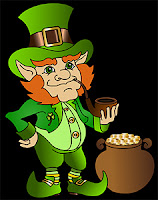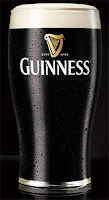In the 17th century, Irish Catholic Nobility fled Ireland for service in France and Spain along with other Catholic Countries. This military migration, which began with he Flight of the Earls, O'Neill and O'Connell, in 1607, three years after the battle of Kinsale, led to a situation where there was no continental European state without Irish men serving in its army, often in Irish regiments that were called Irish brigades. This was particularly so after the Williamite wars when in 1691, 14,000 Irish soldiers went to France alone.
Red Hugh O'Neill was the most powerful of the Irish Chieftains at the end of the 16th century. His father, Matthey, Baron of Dungannon, was loyal to Queen Elizabeth I, and in accordance with the Queen's wishes, he sent his son at an early age to England to be educated. It was hoped that the learning and training he would receive there would make him a firm supporter of the English rule in Ireland.
On his return to Ireland the Queen created him Earl of Tyrone in 1585. He appeared to be an active supporter of the English and in 1593 he took part in the battle between the English and Irish at Belleek on the River Erne.
However, O'Neill secretly planned for the overthrow of English dominance in Ireland, but he knew that this could not be achieved without unity among themselves along with aid from Spain or France. He was elected Chieftain of Tyrone in 1593. He spend much time creating unity among the Chieftains, and particularly, smoothing out difference between himself and O'Donnell of Tirchonaill (Donegal) and Maguire of Fermanagh.
In 1594 Maguire
laid siege in Enniskilllen and defeated an English garrison who had held it for
a number of years. In the same year O'Donnell's army moved south and captured
the province of Connaught, while O'Neill defeated the English in the battles in
Monaghan and Cavan.
After these encounters there was comparative peace in Ulster until 1597 when a three-pronged attack was made on the northern province from Connaght by the new Governor, Conyers Clifford. His army was defeated at Ballyshannon by O'Donnell, Maguire and O'Rourke of Leitrim. Another army advanced from the midlands and was defeated at Mullingar, while O'Neill routed the third army at Drum Fluch in Armagh.
In 1598 the English suffered their greatest defeat at the hands of the Irish at the Battle of Yellow Ford on the Blackwater in Co. Tryone. This victory, led by O'Neill, encouraged all the Irish Chieftains supporting the English to rebel, with the result that the English retreated to within the Pale, an area around Dublin not more than 30 miles by 20.
After these encounters there was comparative peace in Ulster until 1597 when a three-pronged attack was made on the northern province from Connaght by the new Governor, Conyers Clifford. His army was defeated at Ballyshannon by O'Donnell, Maguire and O'Rourke of Leitrim. Another army advanced from the midlands and was defeated at Mullingar, while O'Neill routed the third army at Drum Fluch in Armagh.
In 1598 the English suffered their greatest defeat at the hands of the Irish at the Battle of Yellow Ford on the Blackwater in Co. Tryone. This victory, led by O'Neill, encouraged all the Irish Chieftains supporting the English to rebel, with the result that the English retreated to within the Pale, an area around Dublin not more than 30 miles by 20.
Queen
Elizabeth employed all the resources at her command to defeat this new Irish
unity, and in 1599 she sent over an army of 18,000 men under the Earl of Exxes
to engage O'Neill, whom she regarded as her arch enemy. Instead, Essex sent an
army of 7,000 south from Dublin, which was defeated in Co. Laois. Elizabeth was
enraged and again ordered him to march against O'Neill, and when their two
armies finally met on the opposite banks of the River Lagan they negotiated a
truce. Essex failed so badly that he was recalled to England and was later
executed for raising a revolt against the Queen.
During the six years of this almost continual war O'Neill has been waiting for aid from Spain. The long promised help arrived at last in 1601 when a Spanish fleet with 3,000 men sailed into Kinsale harbor. A month later another fleet with 1,000 men arrived in Co. Cork. O'Neill was disappointed at the size of the aid and at the location where they had chose to land. He would have preferred to have them land in Ulster, where his army was strong, instead of Munster where his allies were weak.
During the six years of this almost continual war O'Neill has been waiting for aid from Spain. The long promised help arrived at last in 1601 when a Spanish fleet with 3,000 men sailed into Kinsale harbor. A month later another fleet with 1,000 men arrived in Co. Cork. O'Neill was disappointed at the size of the aid and at the location where they had chose to land. He would have preferred to have them land in Ulster, where his army was strong, instead of Munster where his allies were weak.
The English
marched on Kinsale and besieged the Spaniards there, while O'Neill and
O'Donnell marched south. Near the end of 1601, through bad lick and treachery,
the fate of Ireland was sealed for generations to come by the victory of the
English at the battle of Kinsale.
O'Donnell went to Spain to seek further aid from King Philip III and while there he was poisoned by an English agent. O'Neill returned to Tyrone where he fought on, but in 1603 he submitted and was granted an amnesty and restoration of his territory by King James I.
In 1607 O'Neill and Rory O'Donnell, the new chieftain of Tirchonaill, received warning that they were about to be arrested. They took flight, and on September 14, 1607, they sailed out of Lough Swilly in Co. Donegal with their families and about 100 faithful followers for France. Both Earls eventually died in Rome, O'Donnell in 1608, and O'Neill in 1616.
O'Donnell went to Spain to seek further aid from King Philip III and while there he was poisoned by an English agent. O'Neill returned to Tyrone where he fought on, but in 1603 he submitted and was granted an amnesty and restoration of his territory by King James I.
In 1607 O'Neill and Rory O'Donnell, the new chieftain of Tirchonaill, received warning that they were about to be arrested. They took flight, and on September 14, 1607, they sailed out of Lough Swilly in Co. Donegal with their families and about 100 faithful followers for France. Both Earls eventually died in Rome, O'Donnell in 1608, and O'Neill in 1616.
Sometime during the 19th century The Flight
of the Earls was later coined with a poetic name, The Flight of the Wild Geese.
The Irish Gift House is proud to offer a Celtic goblet, along with a Celtic tankard, that commemorates the The Flight of the Earls. These Mullingar Pewter gifts are lead free and are hand crafted in Ireland; these vessels represent just two of our many Irish bar-ware gifts.











